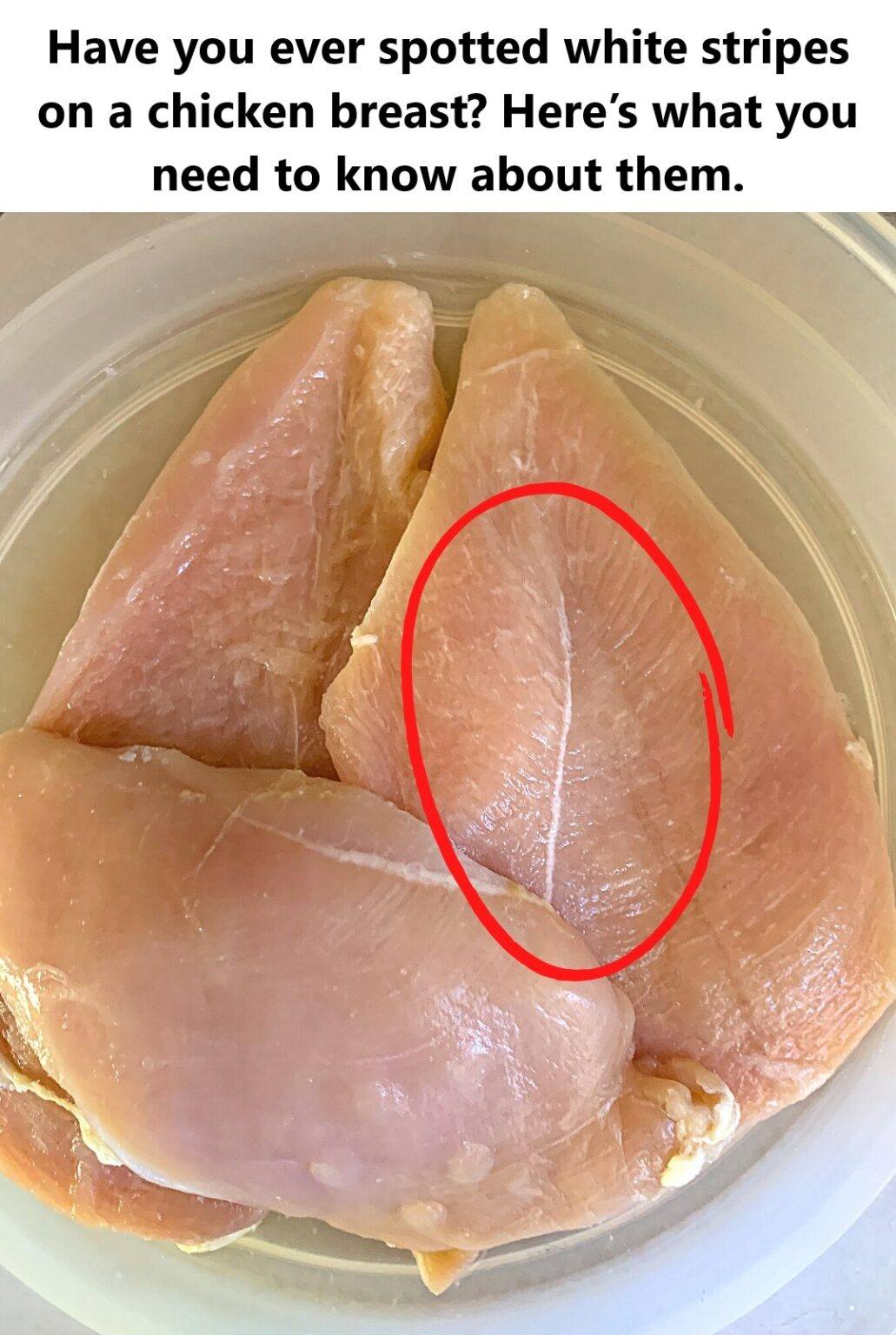ADVERTISEMENT
### **Is White Striping Harmful to Health?**
The short answer is no. The presence of white striping does not pose any health risks. The meat is still safe to eat and is not contaminated. However, if you’re concerned about the fat content, you may wish to trim away some of the visible fat to reduce the grease factor.
It’s worth noting that while white striping may be unappealing to some, it is **not a sign of disease or contamination**. It’s simply a result of how the chicken was raised and how its muscle tissue developed due to selective breeding and feeding practices.
### **How to Handle Chicken with White Striping**
If you find yourself with a chicken breast exhibiting white striping, there are a few things you can do to minimize any negative effects on the texture and flavor:
1. **Trim Excess Fat**: If you notice an excess of fat in the white streaks, you can trim it off before cooking. This can help reduce the greasy texture and prevent an overly fatty taste.
2. **Cook with Moisture**: To counteract the potential chewiness of white-stripped chicken, consider using cooking methods that retain moisture, such as **poaching**, **braising**, or **slow cooking**. These methods help break down tougher muscle fibers and maintain the tenderness of the meat.
3. **Marinate the Chicken**: Marinating your chicken for a few hours before cooking can help tenderize the meat and add flavor, which may improve the overall experience of eating chicken with white striping.
4. **Grill or Sear**: If you prefer grilling or pan-searing, be sure not to overcook the chicken, as this can intensify the dryness of the muscle fibers. Cooking chicken to the perfect temperature (around **165°F or 75°C**) will ensure that it remains juicy.
### **Can You Avoid White Striping?**
If you’re concerned about white striping and would like to avoid it altogether, there are a few things you can consider:
1. **Look for Heritage Breeds**: Some **heritage breeds** of chicken, such as **Cornish game hens** or **heritage Rhode Island Reds**, are not bred for rapid growth and tend to have more natural muscle development. These birds are less likely to exhibit white striping.
2. **Buy from Specialty Farms**: If you want to avoid white striping and other quality issues commonly associated with factory-farmed chicken, consider purchasing meat from **small-scale, ethical farms**. These farms often raise chickens in less crowded conditions with better feeding practices, which may reduce the occurrence of white striping.
3. **Free-Range or Organic Chicken**: Many free-range or organic chickens are raised with more natural diets and growth rates, which may reduce the likelihood of white striping. Look for labels that indicate high welfare and slow-growth practices for potentially better-quality meat.
### **Conclusion**
White striping in chicken breasts is a common, but harmless, phenomenon caused by rapid growth and feeding practices in commercially raised poultry. While it doesn’t affect the safety of the meat, it can alter its texture and flavor, often making it slightly greasier and less tender than chicken without white streaks.
Although it’s not harmful, many consumers find white striping unappealing. If you’re looking to avoid it, purchasing chicken from farms that raise slower-growing breeds or ethical, organic practices can reduce the chances of encountering this issue. Whether you decide to trim away the fat or simply embrace the change in texture, understanding the cause of those white stripes can help you make more informed choices when buying and cooking chicken.
ADVERTISEMENT
ADVERTISEMENT
